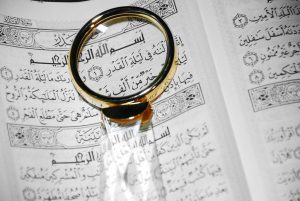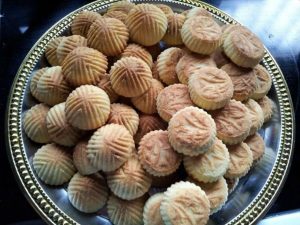Laylat al-Qadr – May 31, 2019
Laylat al-Qadr (also known as Lailat al Qadr or Laylatul Qadr) is the holiest night of the year for Muslims. The name Laylat al-Qadr translates to “Night of Power.” This night commemorates the night Allah (Arabic for God) revealed the Quran to the Prophet Muhammad.
The Prophet Muhammad did not mention when this night takes place during Ramadan. However, many scholars of Islam believe it takes place during the last ten days of Ramadan. They also believe that it falls on an odd-numbered night in the month. The odd number does not refer to the actual date on the calendar (such as May 31), but rather to the day/night number within the month of Ramadan (such as the 27th night of Ramadan). It is commonly believed, especially by Sunni Muslims, that Laylat al-Qadr falls on the 27th night of Ramadan. This year, that night falls on May 31st, and begins at sunset.
In the Quran, Allah says that this night is better than one thousand months, making it more holy than any other night. Muslims observe this night with prayer. They believe that on this night Allah will hear them and either forgive their sins or give them their heart’s desires. Muslims also observe this night with devotional readings of the Quran. Because Laylat al-Qadr could be any of the last ten days of Ramadan, many Muslims treat those ten days as an especially good time for prayer and reading the Quran. Many worshippers try to be especially observant of Ramadan during these last ten days. Some Muslims participate in a spiritual retreat called itikaf (also known as i’tikaaf) where they spend all ten days in the mosque reading the Quran and praying.
Learn more about the Prophet Muhammad and the Quran with these items below:
My First Book About the Qur'an
Eid al Fitr - June 3 - June 4, 2019
Eid al Fitr is a three-day long holiday at the end of Ramadan. Eid al Fitr (commonly referred to just as “Eid” in the context of Ramadan) is a time to celebrate with family and friends. Muslims do observe a different Eid later in the year, called Eid al Adha, so don’t confuse the two. Eid al Fitr means “festival of breaking the fast,” and it marks the end of Ramadan. For more information on what Muslims do during Ramadan, check out our earlier post. During Eid al Fitr, observers celebrate, bond with friends and family, and eat lots of food. Eid is an opportunity for observers to stuff their faces with delicious food after fasting for a month. Many Muslims take a few days off from work to participate in this holiday.
Eid al Fitr doesn’t begin until the morning after the first sighting of the new moon since the start of Ramadan. If that sounded confusing, it is a little. Ramadan is based on the lunar cycle, and the dates vary year to year. Ramadan doesn’t start until the first crescent of the moon appears in the sky, and lasts an entire lunar cycle. Therefore, Ramadan can’t end until the new moon appears in the sky. Eid al Fitr starts the morning after the new moon is spotted. Depending on where you are located in the world, there may be some variation as to when Eid al Fitr starts. The Fiqh Council of North America has determined that Eid al Fitr 2019 will start on June 4, based on astronomical calculations.
Aside from the giant feast that occurs during Eid, there are some other traditions Muslims participate in for this holiday. As Eid gets closer, many people clean their houses so that they’re completely clean for when their visitors arrive. They’ll make sure to have lots of sweets on hand, and may bake or purchase traditional treats known as Kaek al Eid, which is a kind of cookie. These cookies are traditionally made in three different flavors: pistachio, walnut, or date.
Families often exchange gifts at Eid. However, tradition dictates the type of gift that is given. The most common type of gift is new clothes for both kids and adults. More important than giving clothes to loved ones, is giving to the poor and needy, known as zakat. Zakat is one of the five pillars of Islam. Zakat can be in the form of clothes, food, or money. It is a way for Muslims to try to help those less fortunate, and help those in need celebrate Eid as well.
On the first day of Eid, many Muslims gather at their mosque to perform the early morning prayers. Then over the next few days, family and friends visit each other and exchange greetings and presents for this holiday. A traditional greeting for this holiday is Eid Mubarak, meaning “blessed Eid” or Eid Sa’id, meaning “Happy Eid”. The men (with the exception of elders) are required to see all of their relatives and bring gifts, and eat lots of food while they are there. It’s common for Muslims to gorge themselves during this holiday, and maybe even gain a few pounds.
Learn more about the traditions of Eid al Fitr with the items below:
Celebrate Ramadan & Eid Al-Fitr
If there's a particular celebration you or someone you know participates in that we missed, let us know by leaving a comment on this post. Or, if you think we got something wrong, please also comment and let us know. We try to be as accurate as possible, but if there's a mistake, we want to correct it.




Add a comment to: The Origins and Practices of Holidays: Laylat al-Qadr & Eid al Fitr